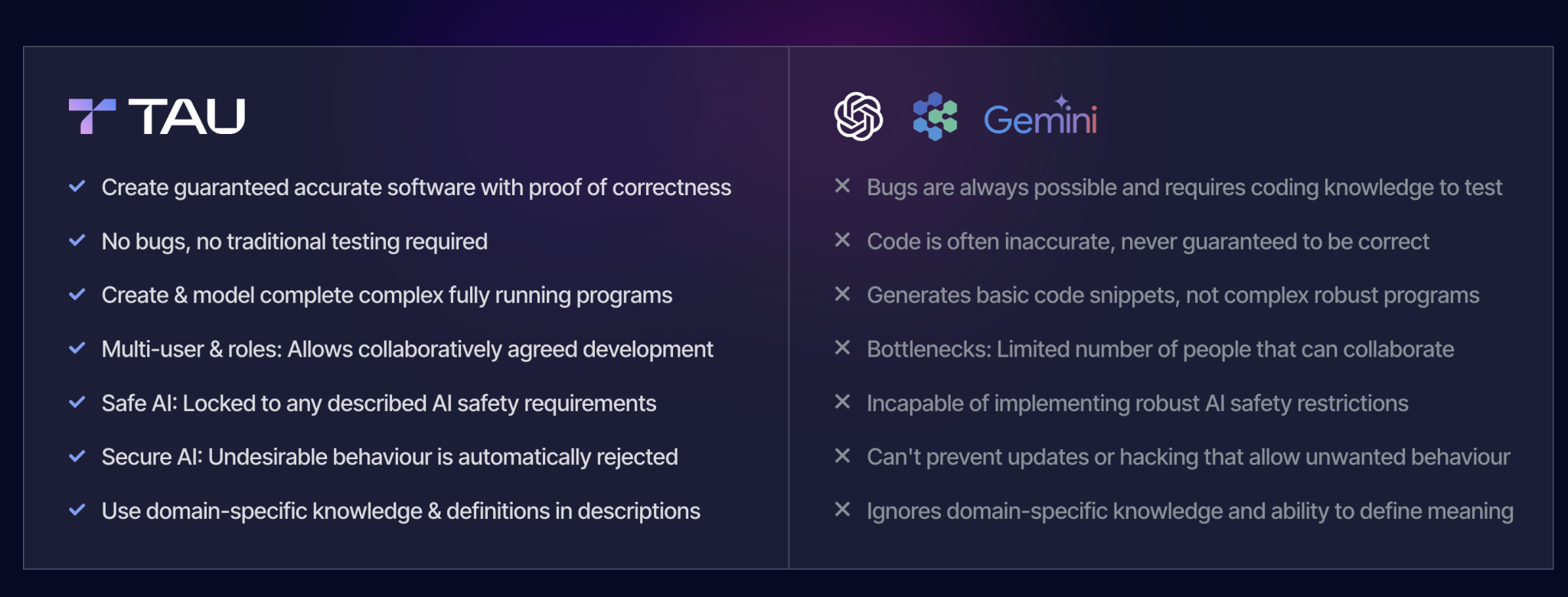

Tau is a logical AI engine that enables the creation of software and AI capable of fully mechanized reasoning, allowing software built with Tau to logically reason over formalized information, deduce new knowledge, and automatically implement it within the software, allowing AI to accurately act autonomously and evolve based on generic commands, greatly advancing software development and AI safety.
As part of this ongoing progress, the Tau project shared an early progress update of the currently implemented features of its proprietary logical specification language. The update introduces basic concepts currently available, such as the ability to refer to its own sentences, which is a step towards the language’s ability to reason over the software it creates and information written in a compatible manner.
Overview of Tau Language Progress Showcase
The most recent progress video on the Tau Language introduces part of the basic syntax, key features like Boolean function normalization and quantifier elimination, and how to use these features from the Tau REPL interface along with defining functions and recurrence relations and storing and retrieving Tau formulas while showcasing the language’s ability to refer to its own sentences, an important step forward in the development of Tau’s logical AI.
The Future of Self-Referential Logical AI – AI Safety and True Decentralized Governance
By allowing the system to logically reason over specifications in the same language, the Tau project is working towards ensuring that AI behavior strictly adheres to safety constraints that you define, automatically rejecting any unauthorized updates or behavior. This self-referential capability also has the potential to facilitate decentralized governance by enabling consensus detection and automated enforcement of agreements among multiple stakeholders, ensuring that the evolving software remains aligned with the collective decisions made by its users. This approach significantly reduces risks associated with AI autonomy and enhances collaborative, scalable software development.
Overcoming the Limits of LLMs with Tau’s Logical Specification Language
While LLMs and traditional machine learning (ML) methods excel at tasks like translation, generation, and summarization, they falter when it comes to consistent and accurate logical reasoning. Due to inherent limitations highlighted by complexity theory, these models are perpetually prone to logical errors. In comparison, Tau Language aims to address these challenges with its logical specification language, which inherently ensures security, correctness, and the ability to reason logically over complex information.
Comparing Features: Tau vs. LLMs/Machine Learning
Tau: The Future of AI and Software Development
Tau Language offers AI capable of logical reasoning and represents a significant evolution to the current state of software development. Tau’s logical AI is capable of machine learning, and it is mathematically proven that machine learning cannot reliably do logical reasoning. Thus Tau stands out as the superior AI by enabling logical reasoning and ensuring correctness and security. As Tau Language nears its Alpha release, its potential becomes increasingly apparent.
Visit Tau.net to learn more about Tau and join the discussion on the future of AI by following Tau on X @TauLogicAI
Thanks to Tau.net team for the thought leadership/ Resources for this article. Tau.net has supported us in this content/article.
The post Tau’s Logical AI-Language Update – A Glimpse into the Future of AI Reasoning appeared first on MarkTechPost.